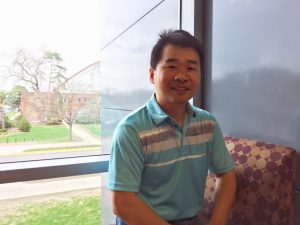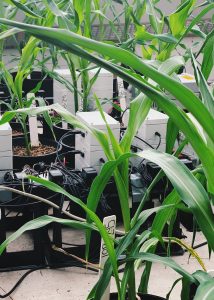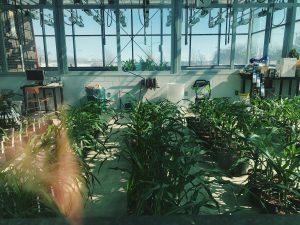Water can be a costly resource for farmers, but Liang Dong, a professor in the Department of Ele ctrical and Computer Engineering at Iowa State University, is in the process of developing a device with the potential to lower the amount of money farmers put toward water — resulting in economical farming methods and cheaper foods on grocery store shelves.
ctrical and Computer Engineering at Iowa State University, is in the process of developing a device with the potential to lower the amount of money farmers put toward water — resulting in economical farming methods and cheaper foods on grocery store shelves.
Dong and his colleagues at Iowa State University and the University of Nebraska-Lincoln have been awarded a $300,000 grant from the National Science Foundation (NSF) for their proposal, consisting of the creation of a device he calls, “a Fitbit-like device, but for plants instead of humans.” This device is ultimately a sensor that is worn on the stalk of a plant. Similar to a Fitbit, the sensor measures internal sensations of the plant, specifically the ability of a plant to uptake water. By monitoring how fast different plant varieties absorb and transport water in different environments and explaining the differences in drought tolerance, plant scientists could select and breed specially designed plants that require less water to grow.
“Farms want plants that can grow well in a drought environment and produce a high yield,” Dong said. “Farmers don’t want to put too much water into their fields, because agriculture is the largest consumer for freshwater by far. I hope that this sensor will help breeders select the right plant varieties that can grow under drought conditions, so farmers will use less water, thus saving production cost.”
 After creating the sensor, Dong and his research team plan on formulating a way to wirelessly transport data. With a wireless, stable and flexible device on the plant, scientists or farmers won’t have to travel to the field as often.
After creating the sensor, Dong and his research team plan on formulating a way to wirelessly transport data. With a wireless, stable and flexible device on the plant, scientists or farmers won’t have to travel to the field as often.
“If we have this type of sensor, we will be able to continuously inform scientists of the plant’s ability to uptake water,” Dong said. “So whenever there is a water-relevant, interesting thing happening in the plant, we can remotely capture the signal at that moment without sending people to the field to gather data.”
Although this Fitbit-like sensor is very intricate, it will still be affordable in the future — as cheap as less than a dollar. Dong is prioritizing a low cost for the device without sacrificing its performance, so even individual farmers can invest in the sensors and save as much water as possible.
“One of the objectives of this work is to reduce the price of the device to an affordable level,” Dong said. “In the laboratory, we are always trying to reduce the cost through developing novel design principle and improving manufacturing process.”
A lot of the $300,000 awarded to the team is planned to be put toward the implementation of this Fitbit-like device idea. Dong said the Plant Sciences Institute at Iowa State provided a seed funding to develop this idea, and now this NSF grant will allow him to jumpstart the project based on the developed idea.

“I was hoping to get this grant because this is a useful device, a new sensor that will have a great impact on reducing the cost of our foods,” Dong said. “With the grant’s support, we can do lots of things that can help breeders to select varieties with high drought tolerance and help biologists to understand what is actually going on with water within the plants in different environments.”
By collaborating with geneticist Dr. Patrick Schnable, soil scientist Dr. Michael Castellano at Iowa State and geneticist Dr. James Schnable at University Nebraska-Lincoln, Dong will validate whether the sensor has the potential to accelerate the breeding of high drought-tolerance plants.
“There is a direct link from this device to the general public,” Dong said. “Our device, if successful, will help obtain a high crop yield and sufficient foods for people at a low input cost.”